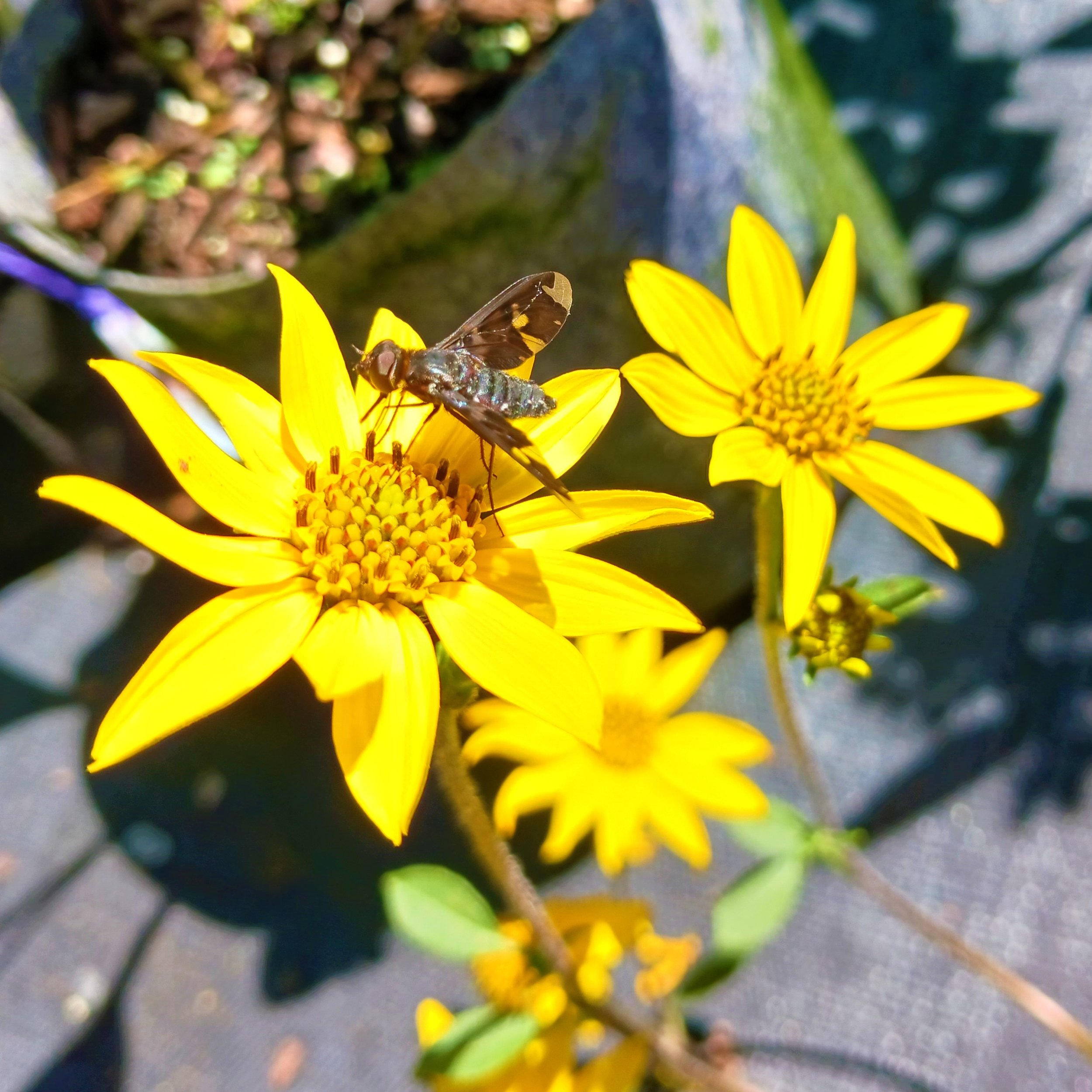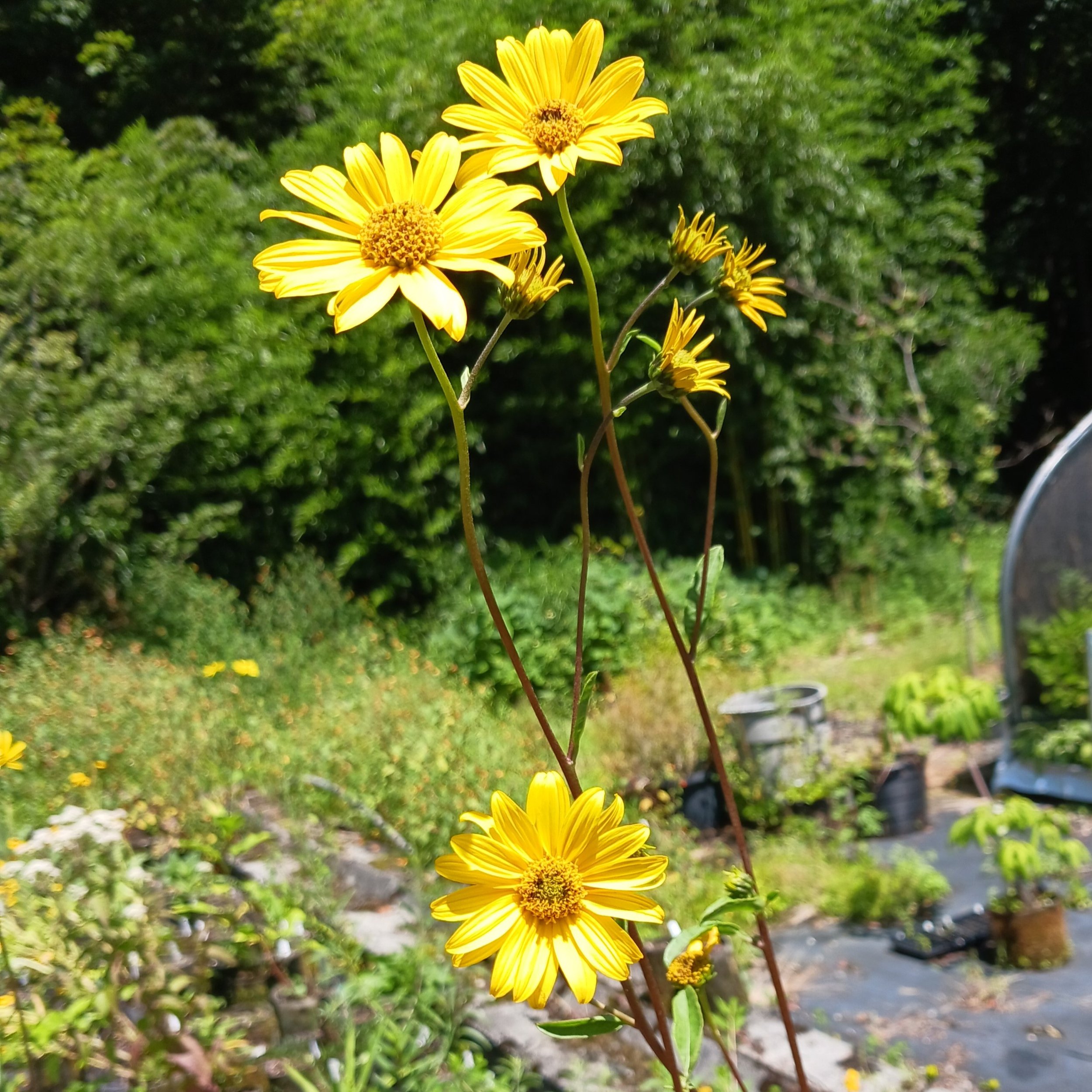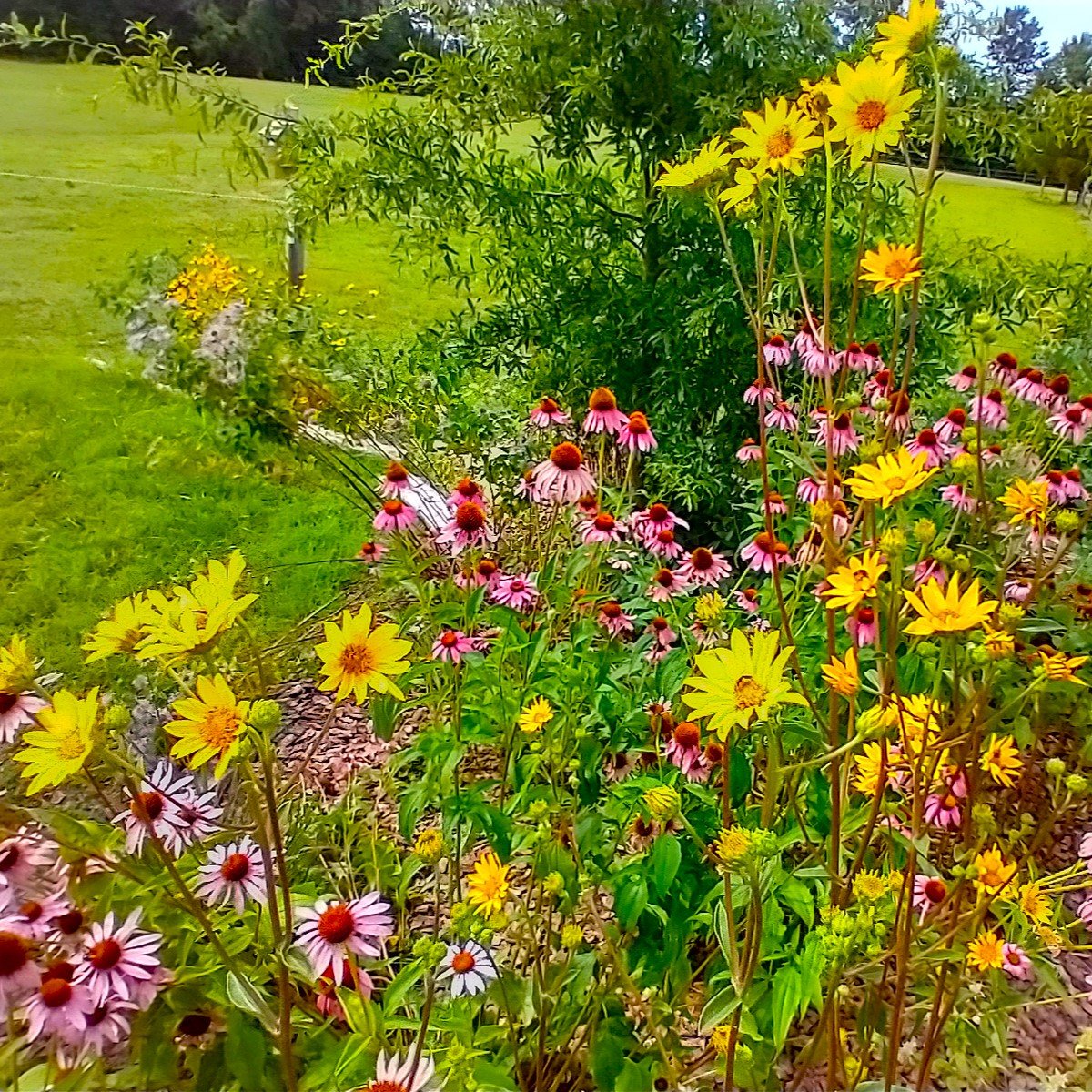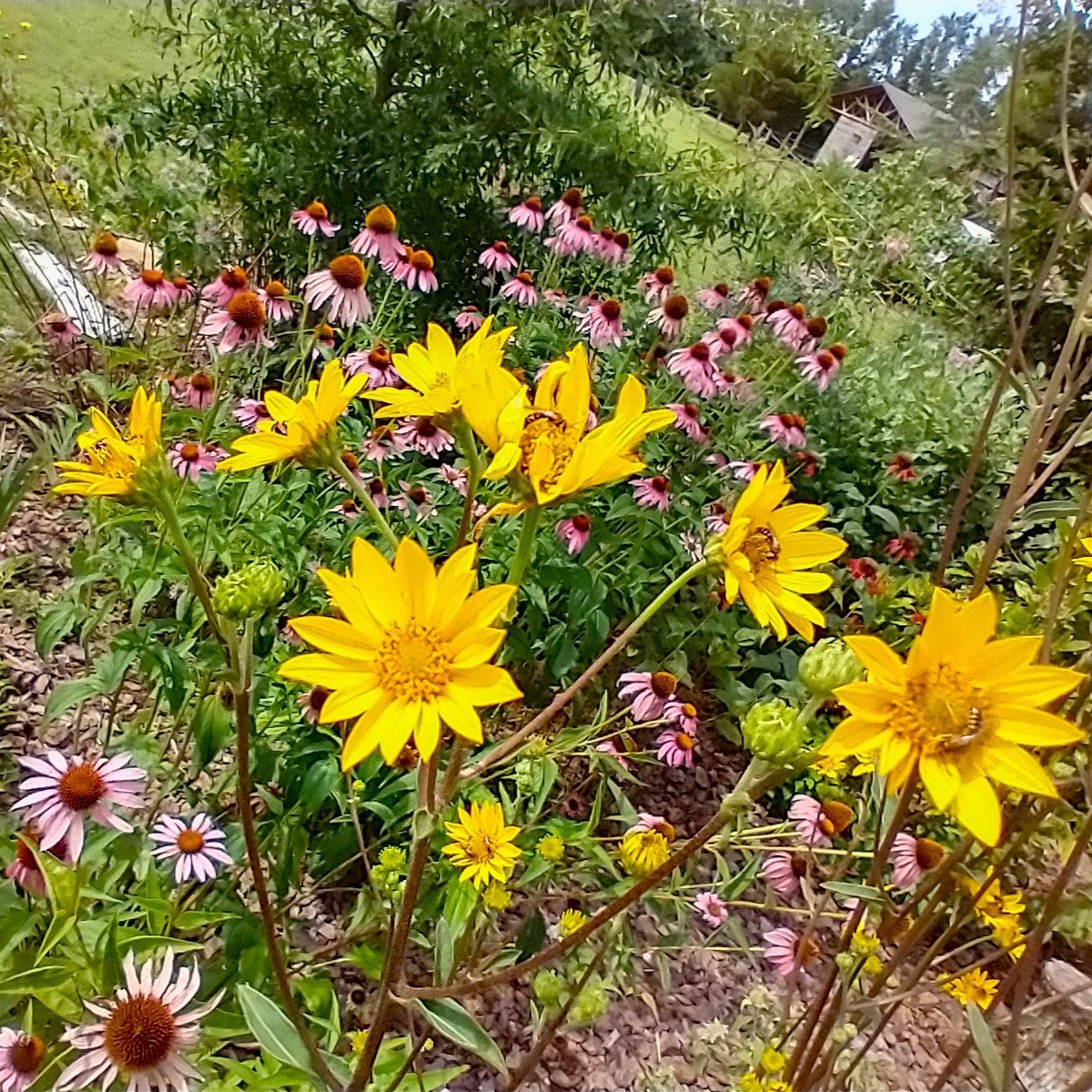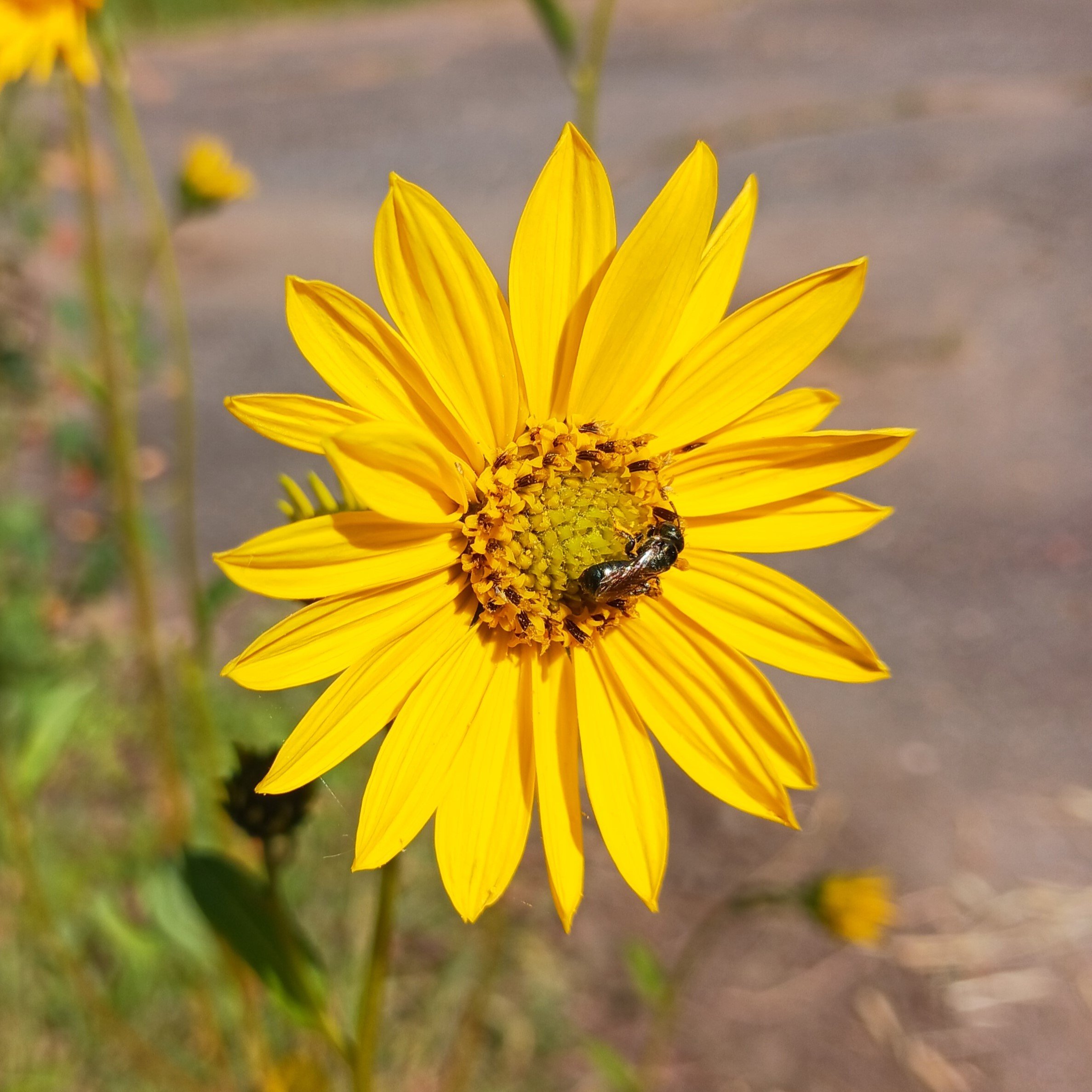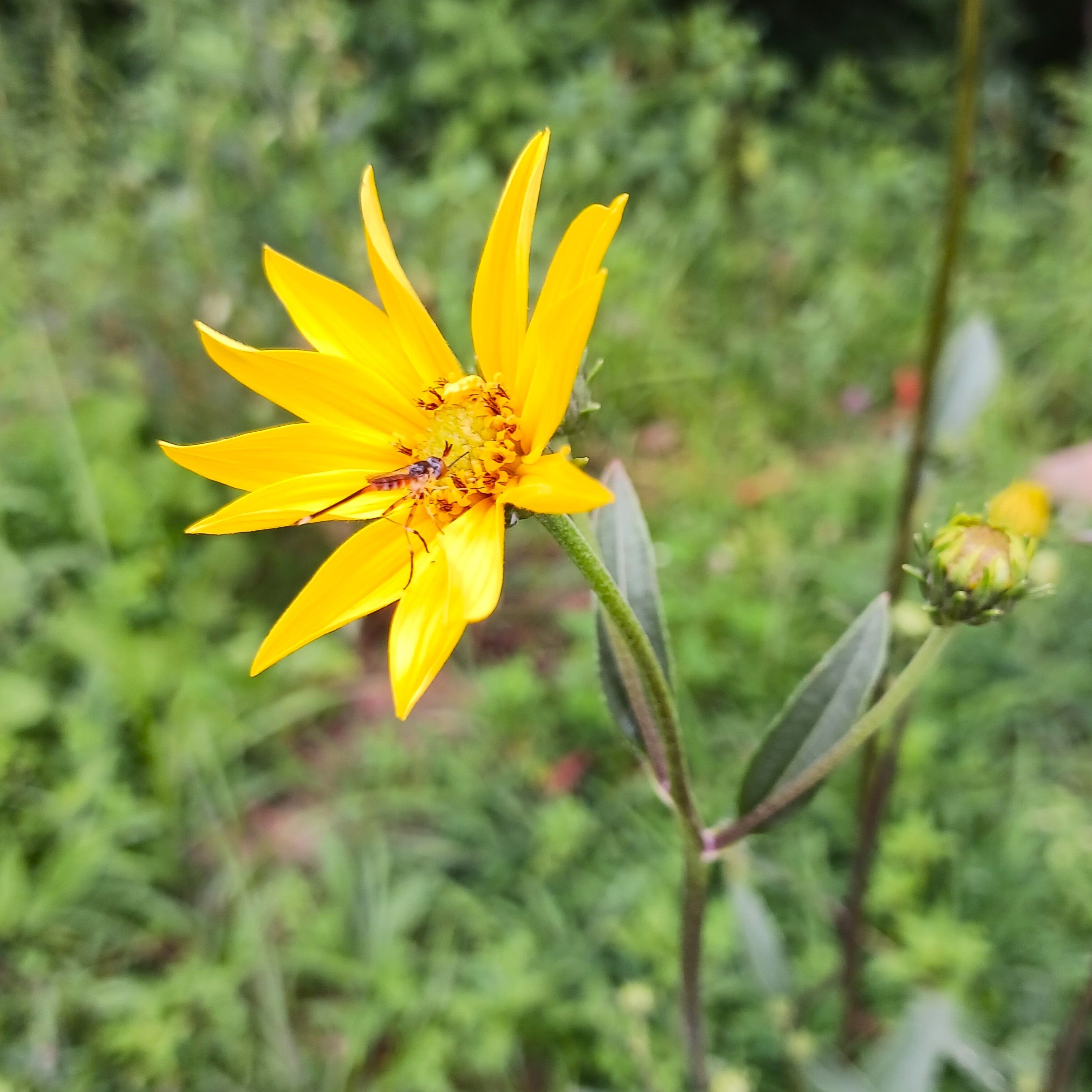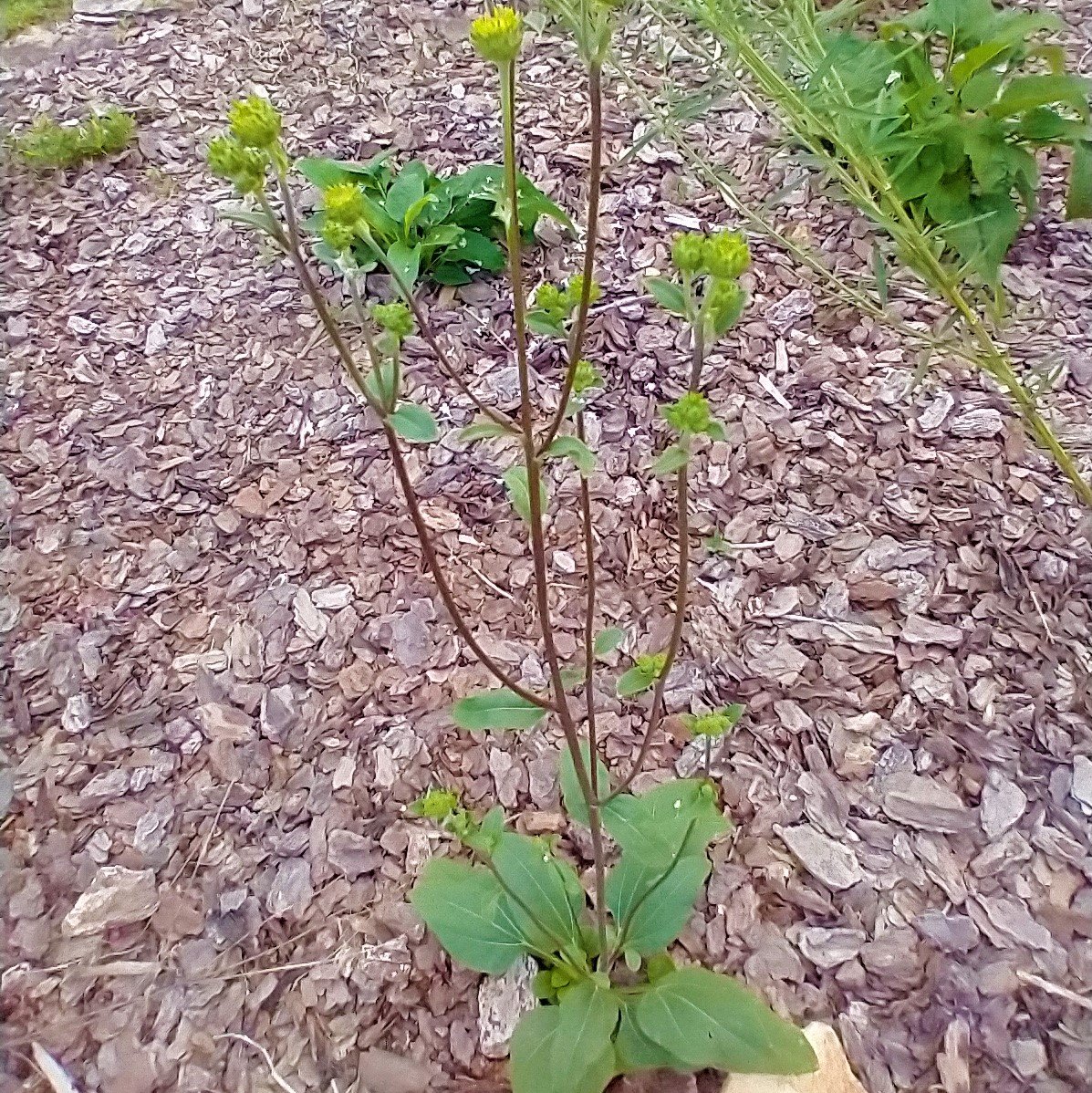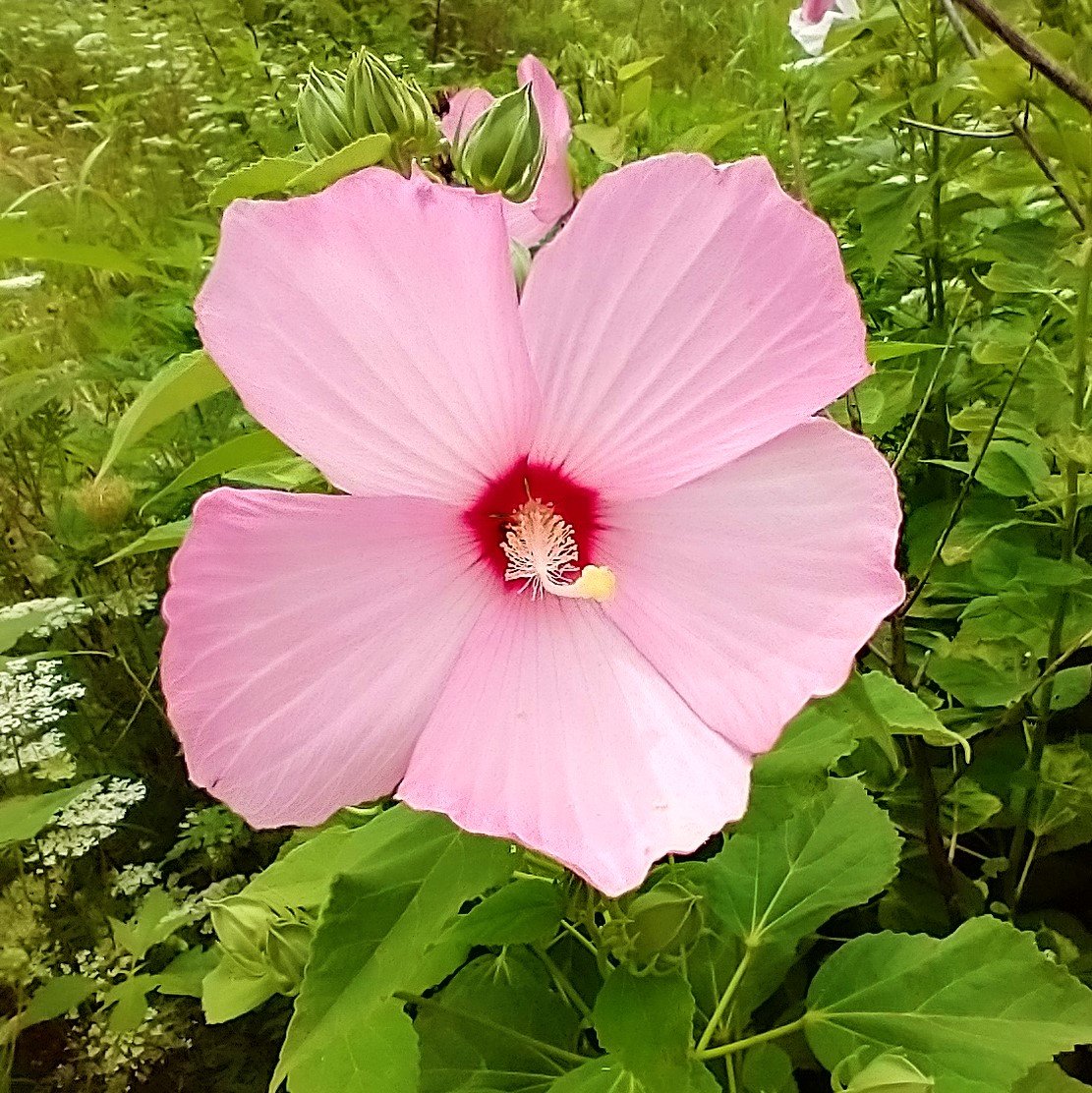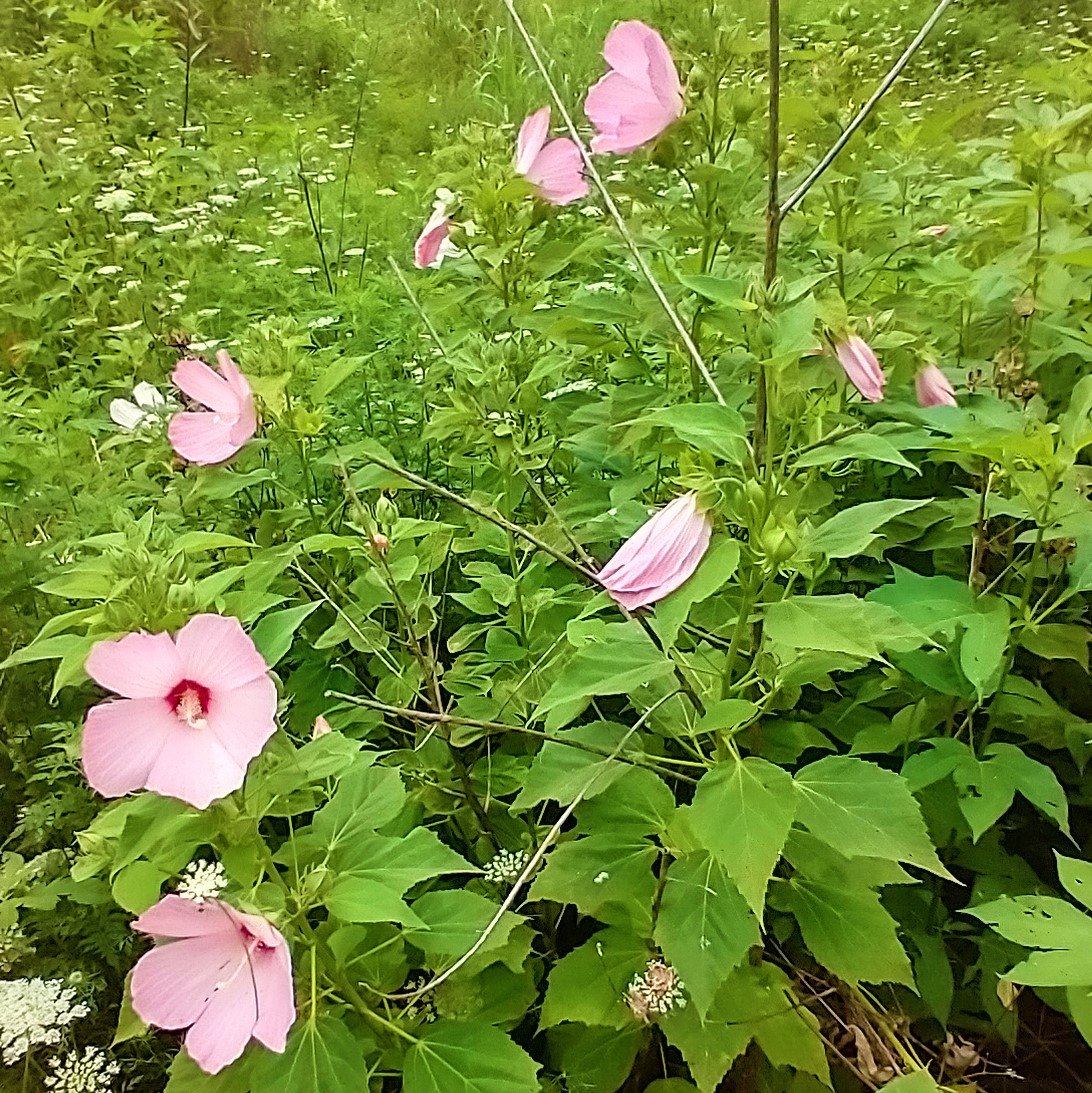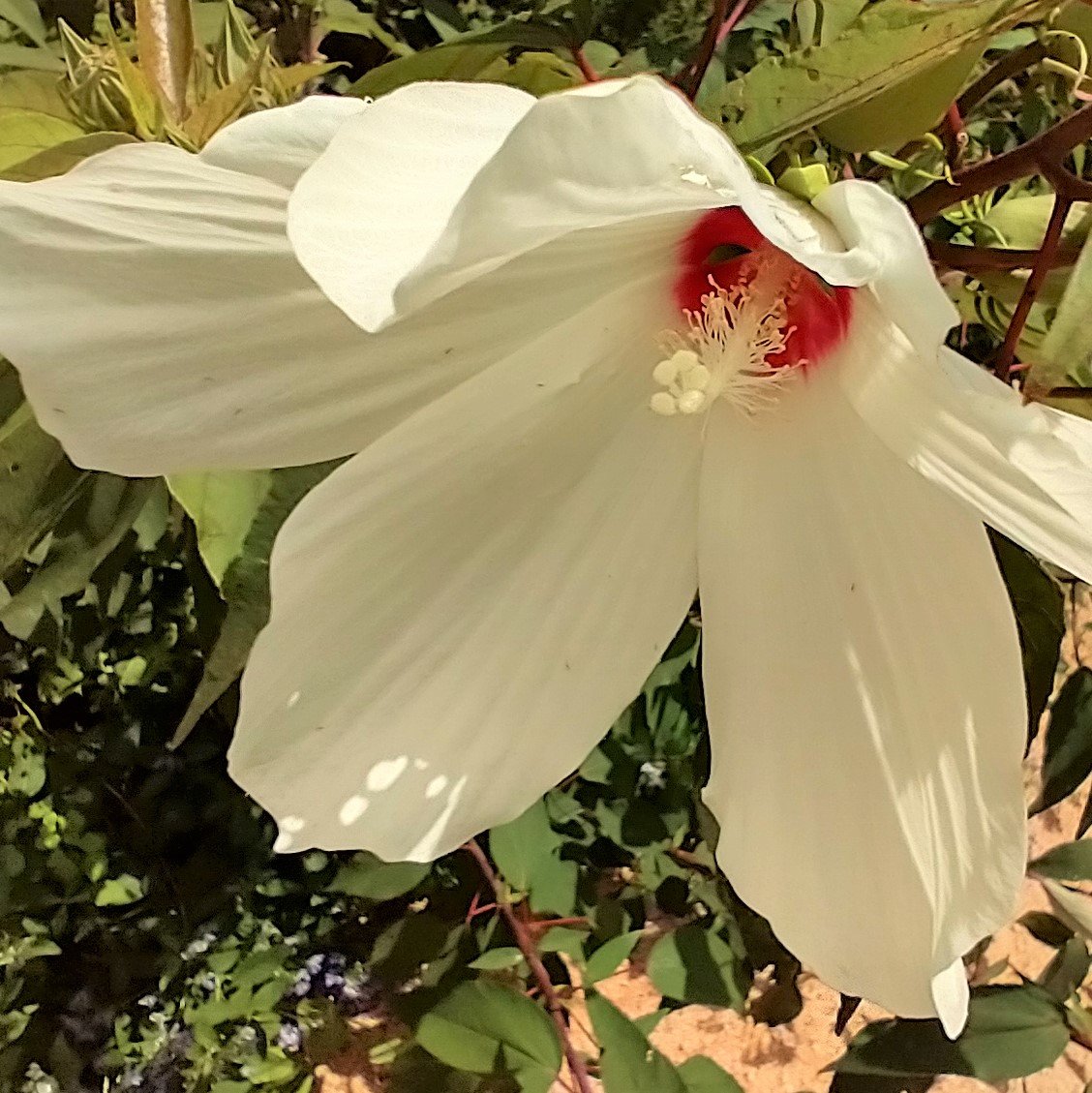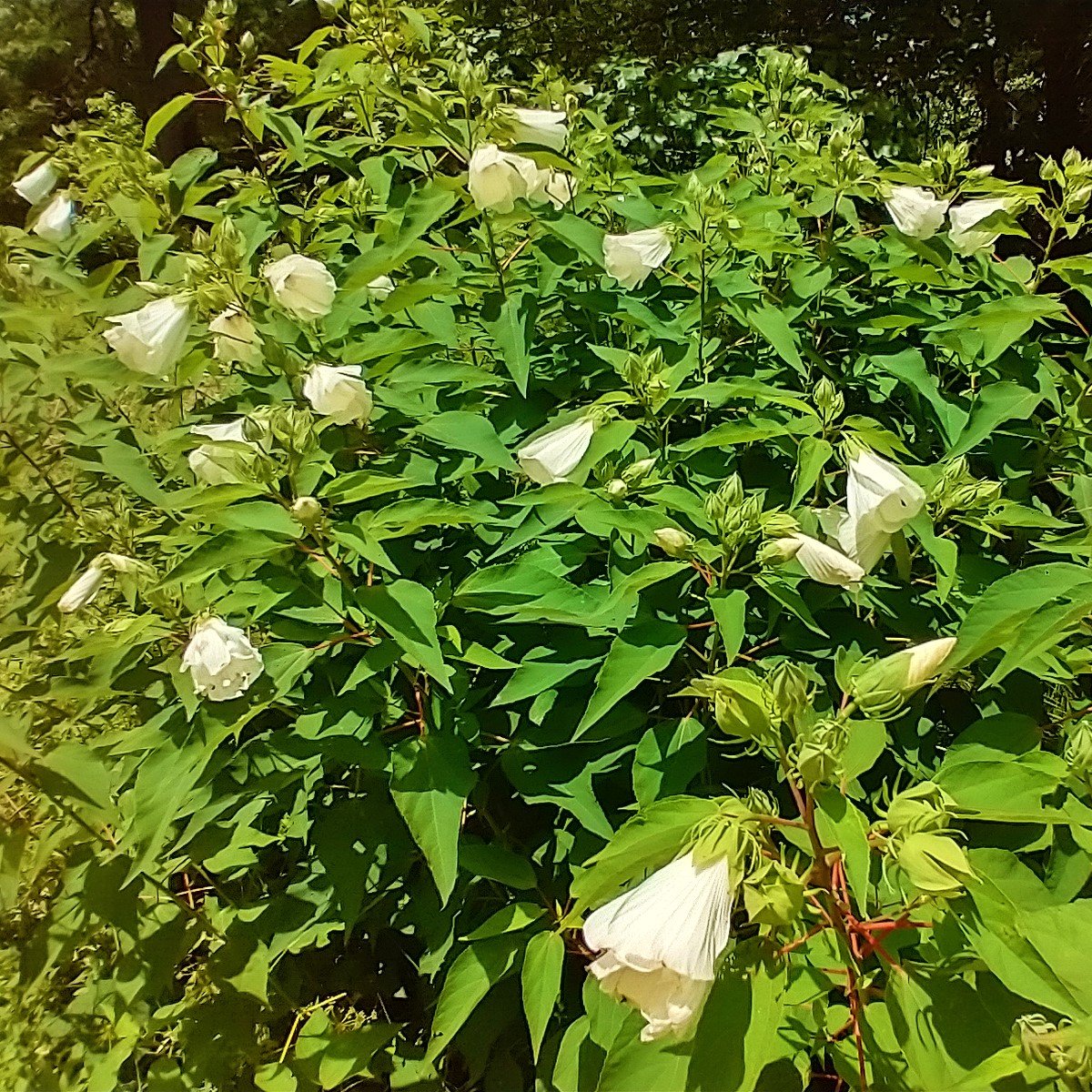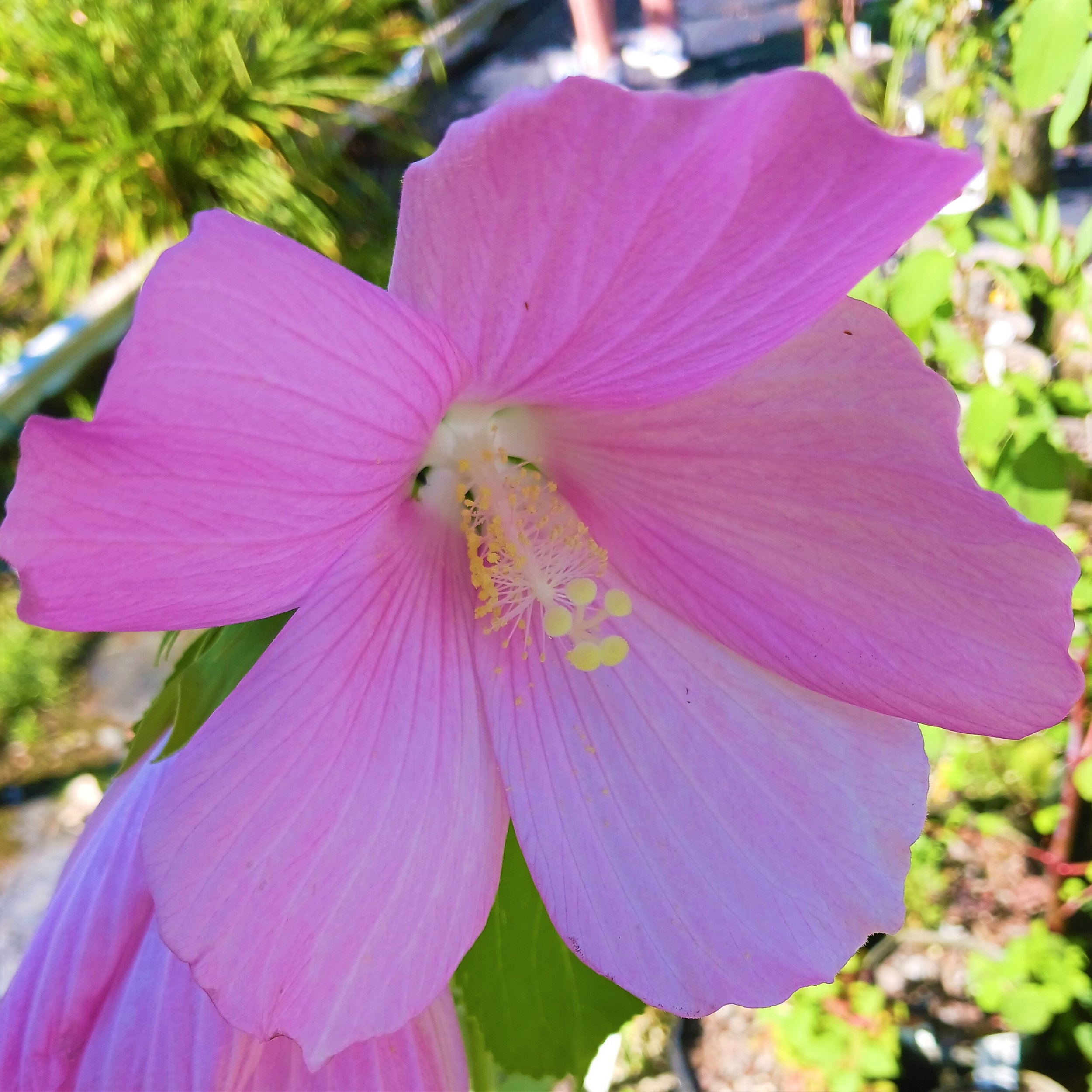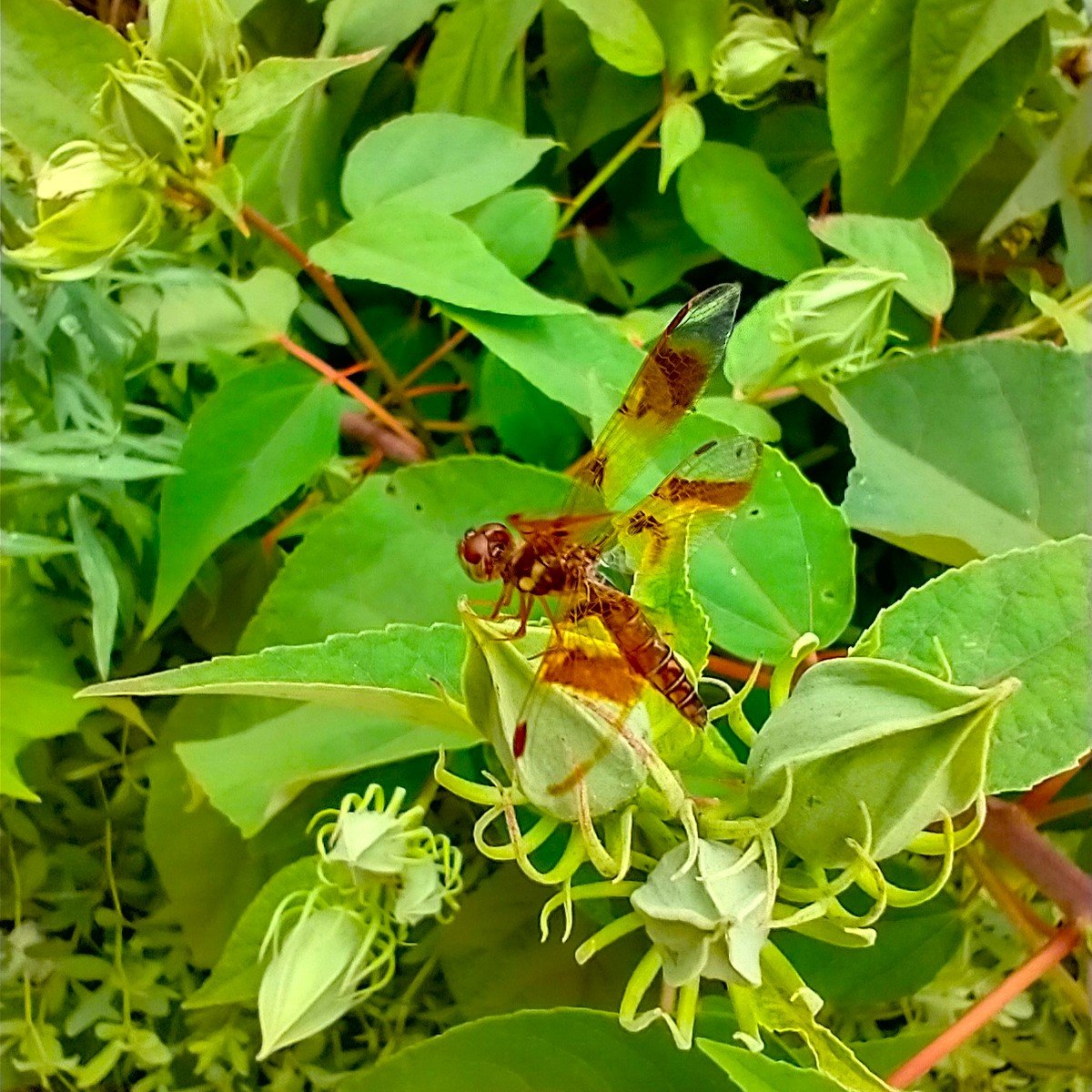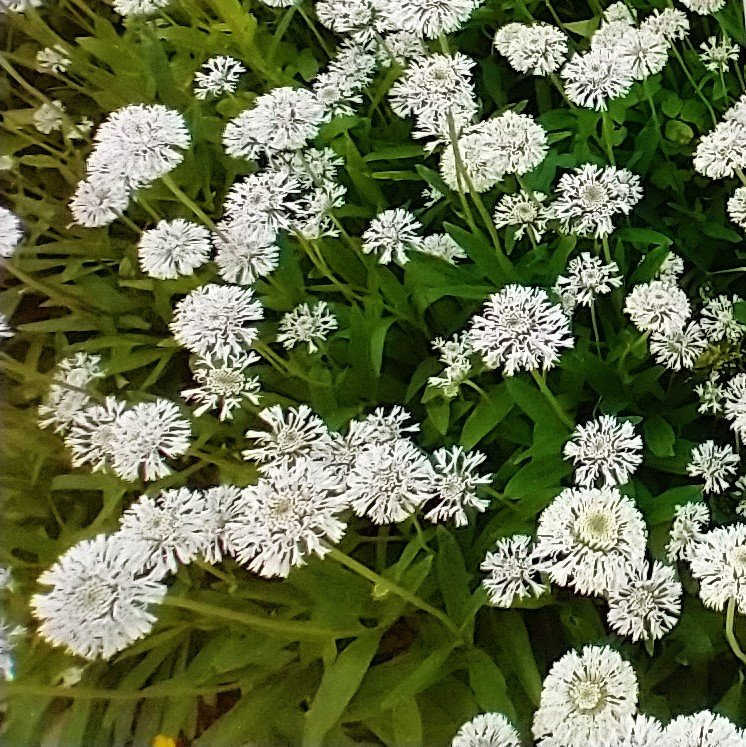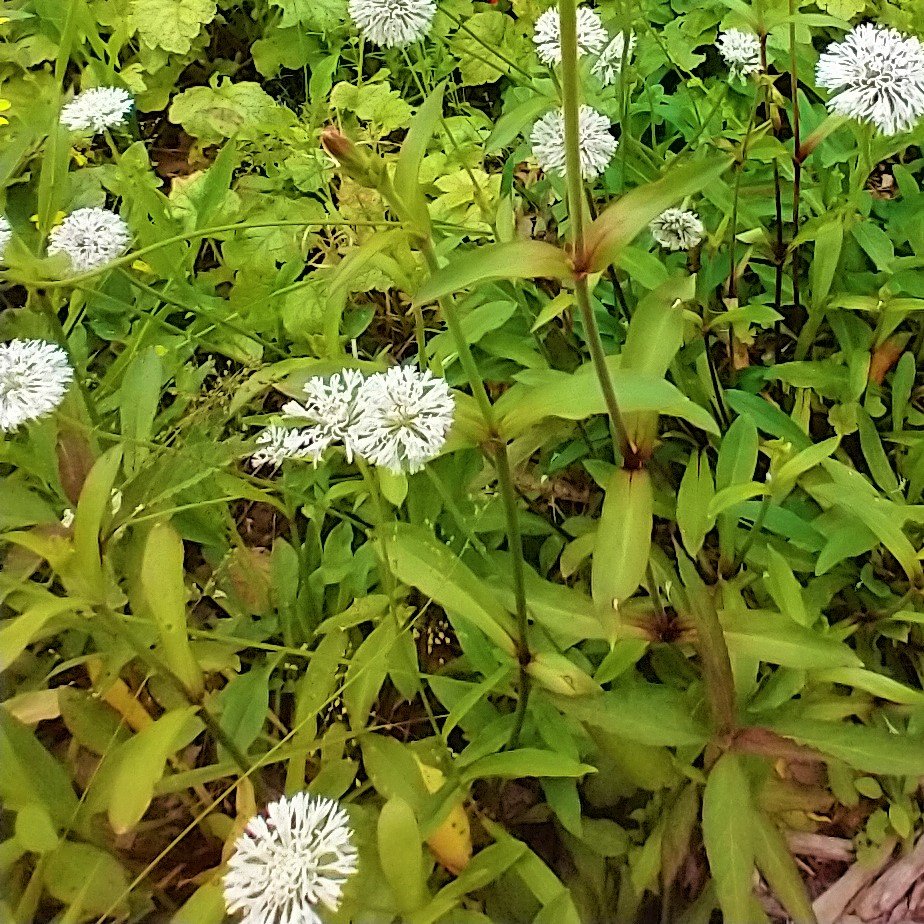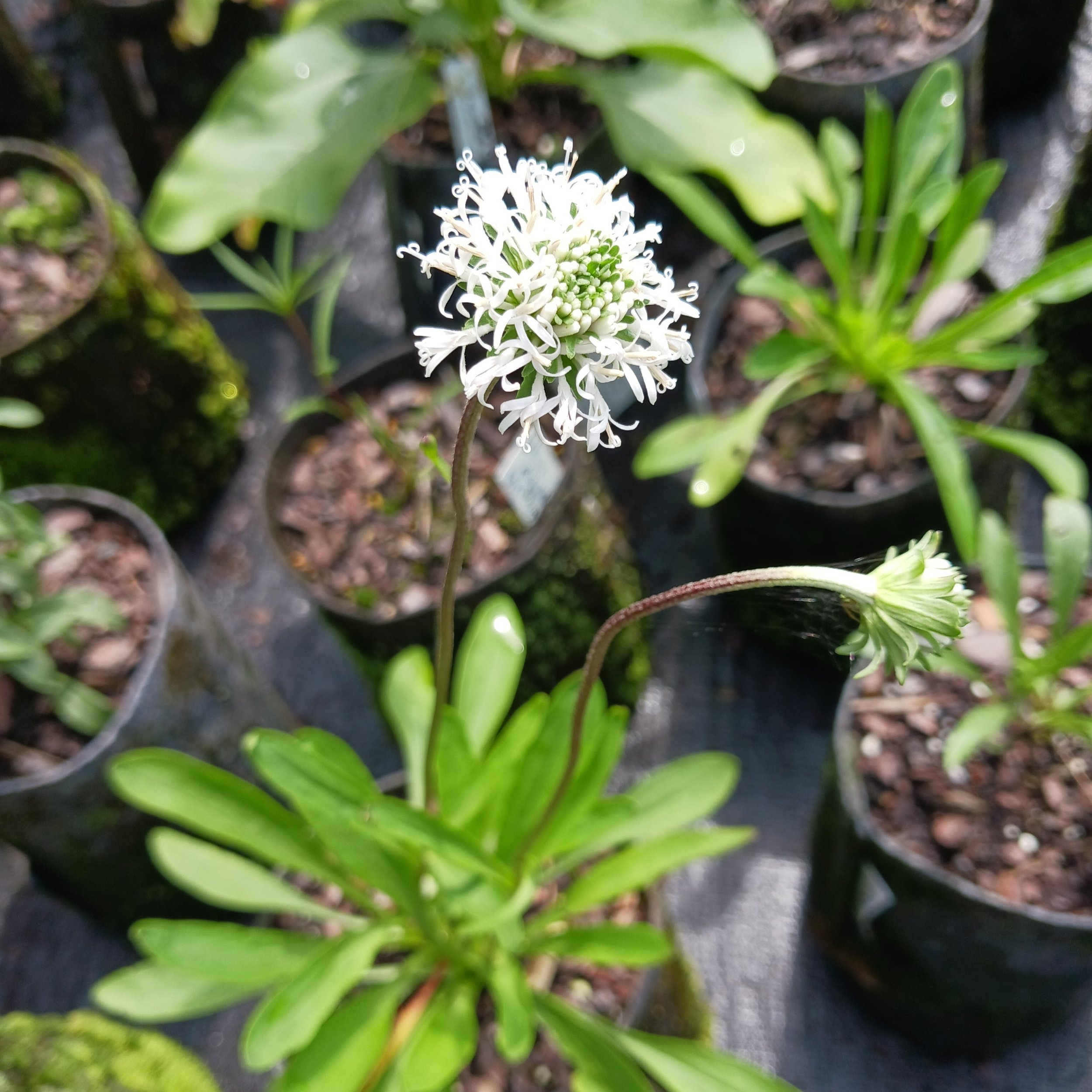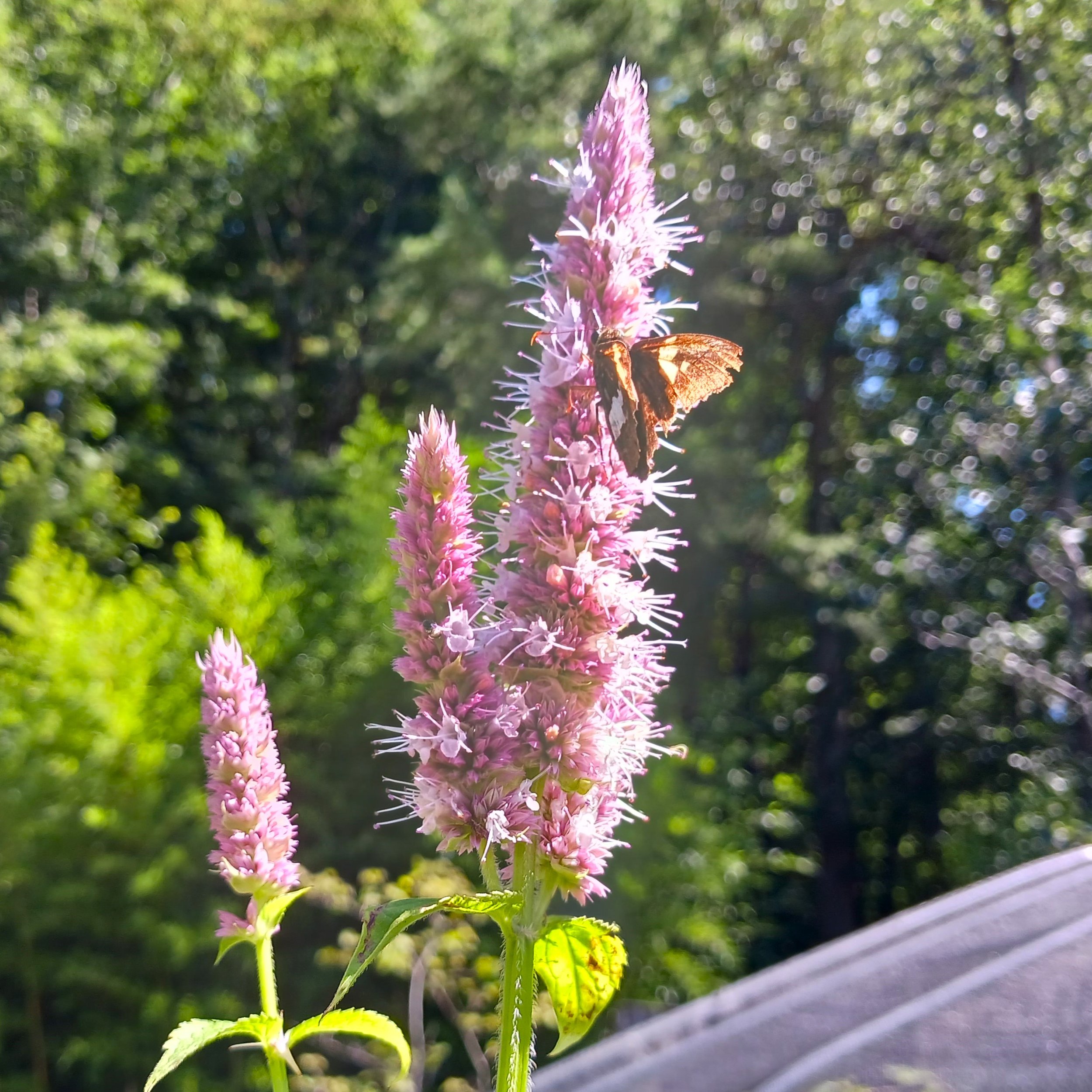 Image 1 of 8
Image 1 of 8

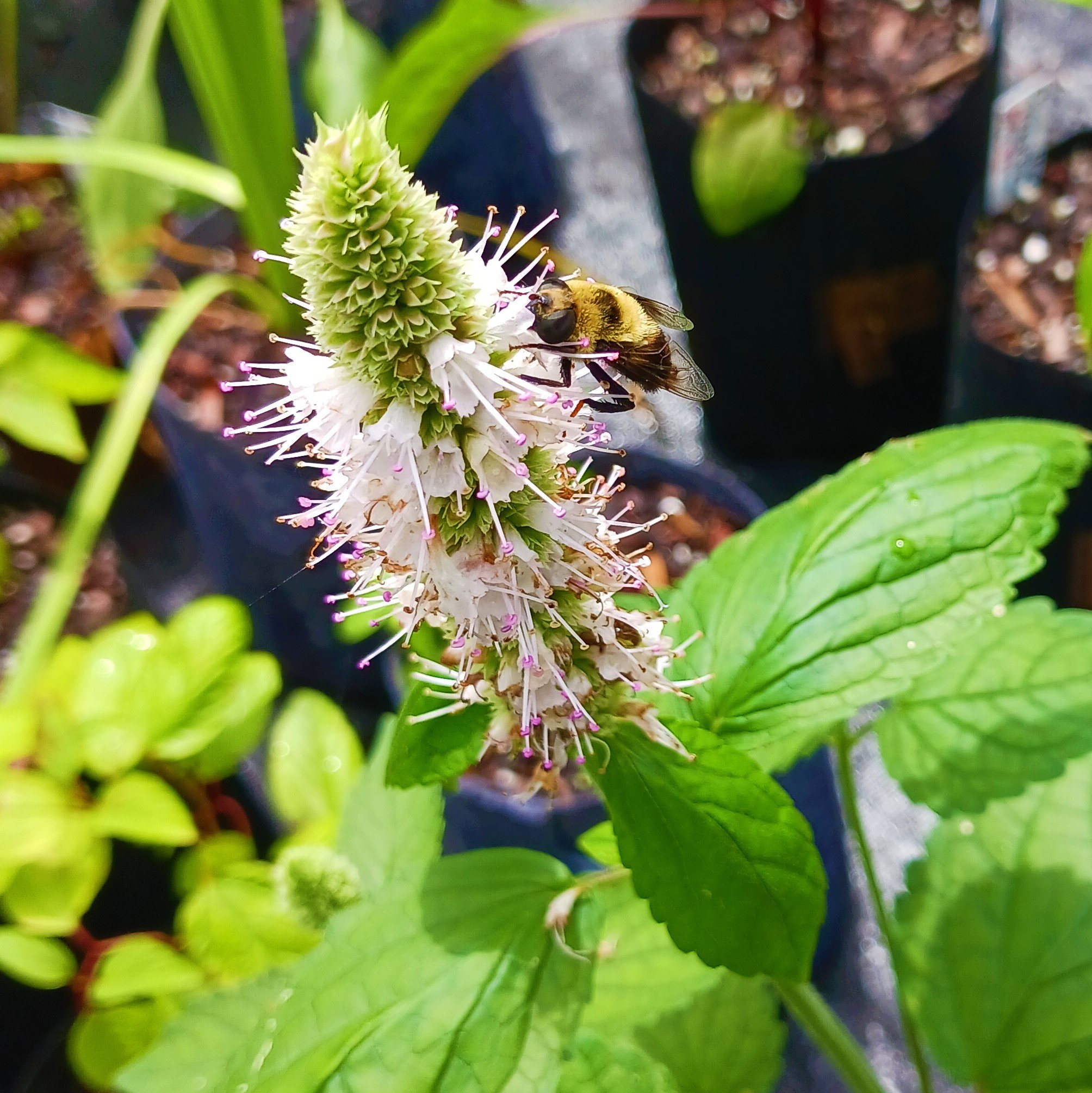 Image 2 of 8
Image 2 of 8

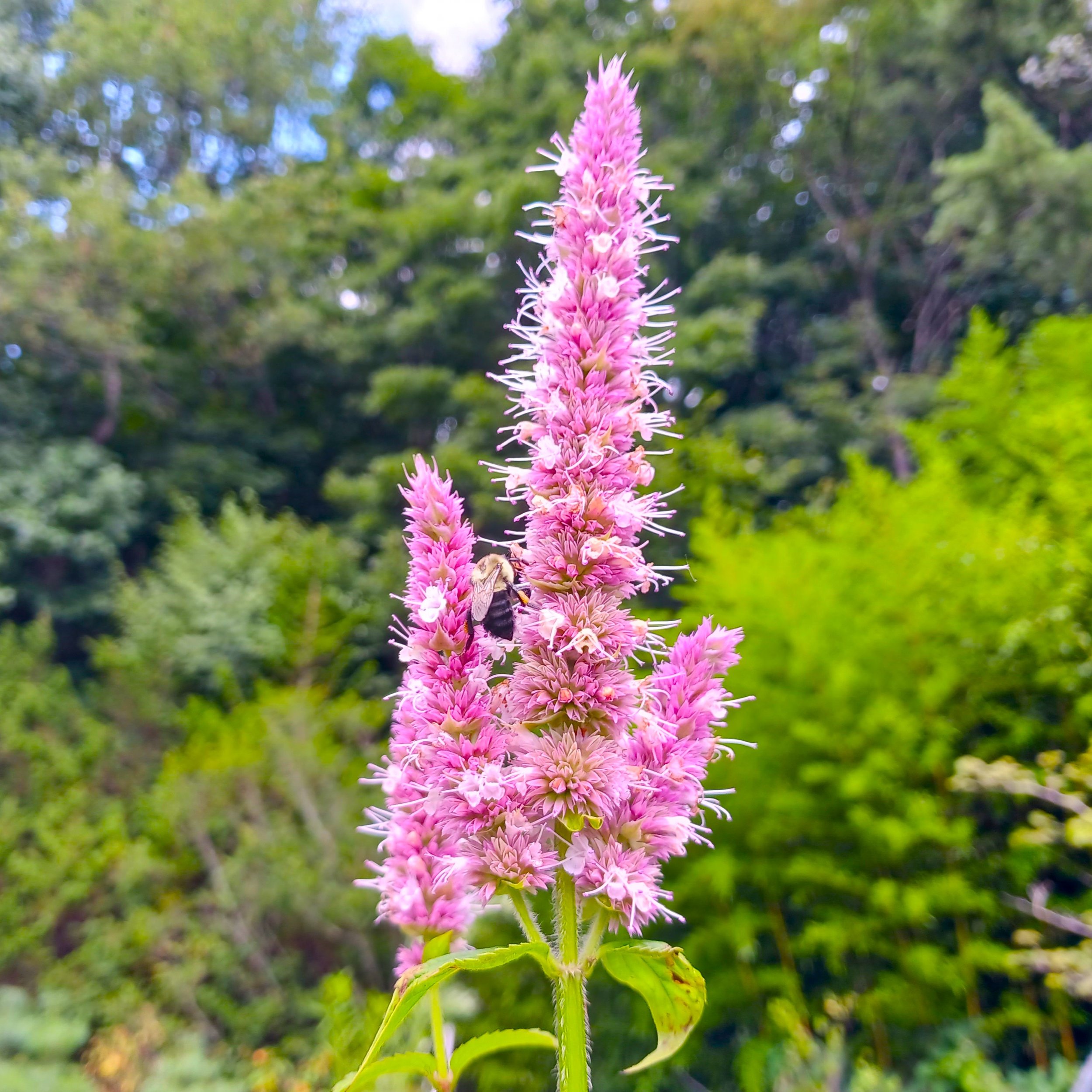 Image 3 of 8
Image 3 of 8

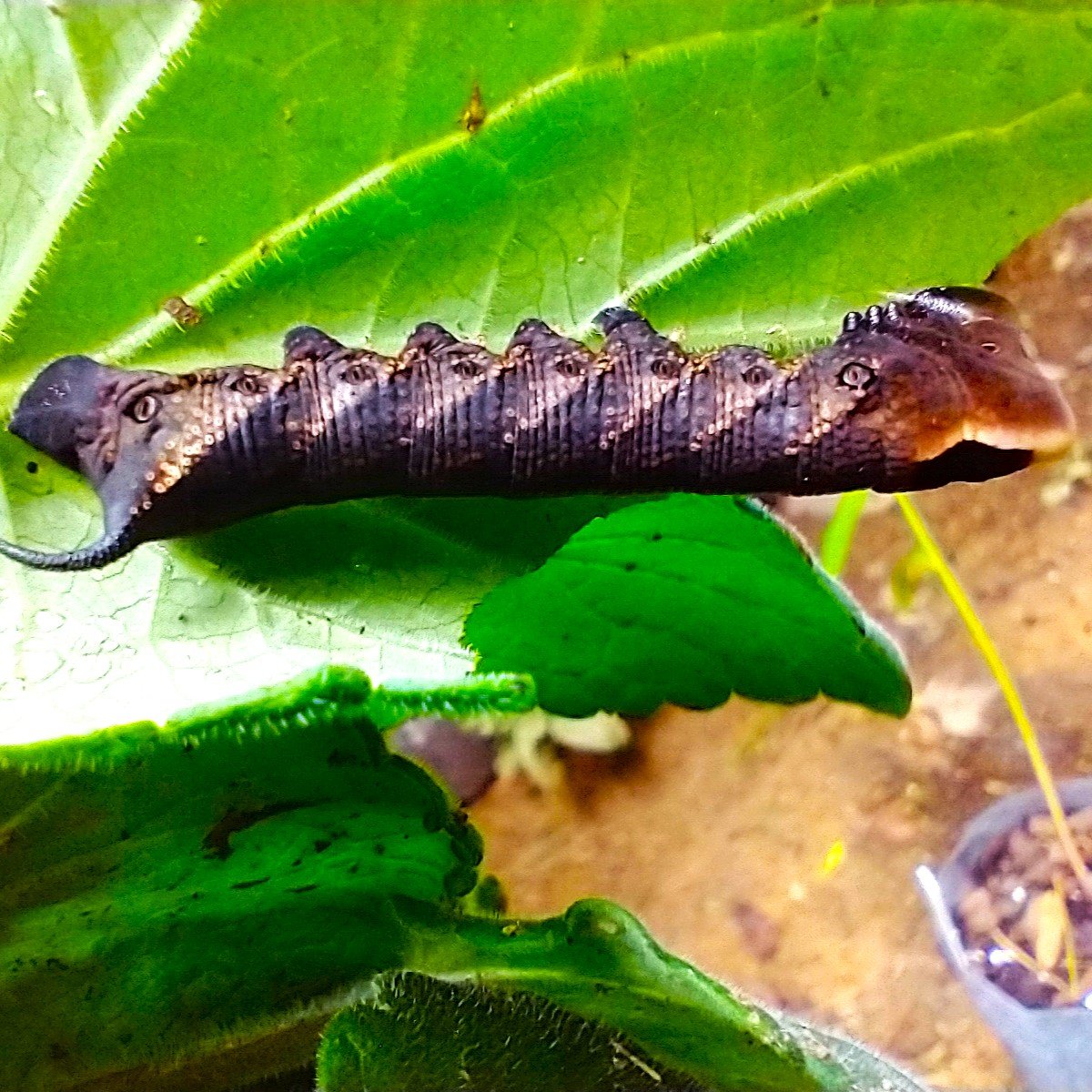 Image 4 of 8
Image 4 of 8

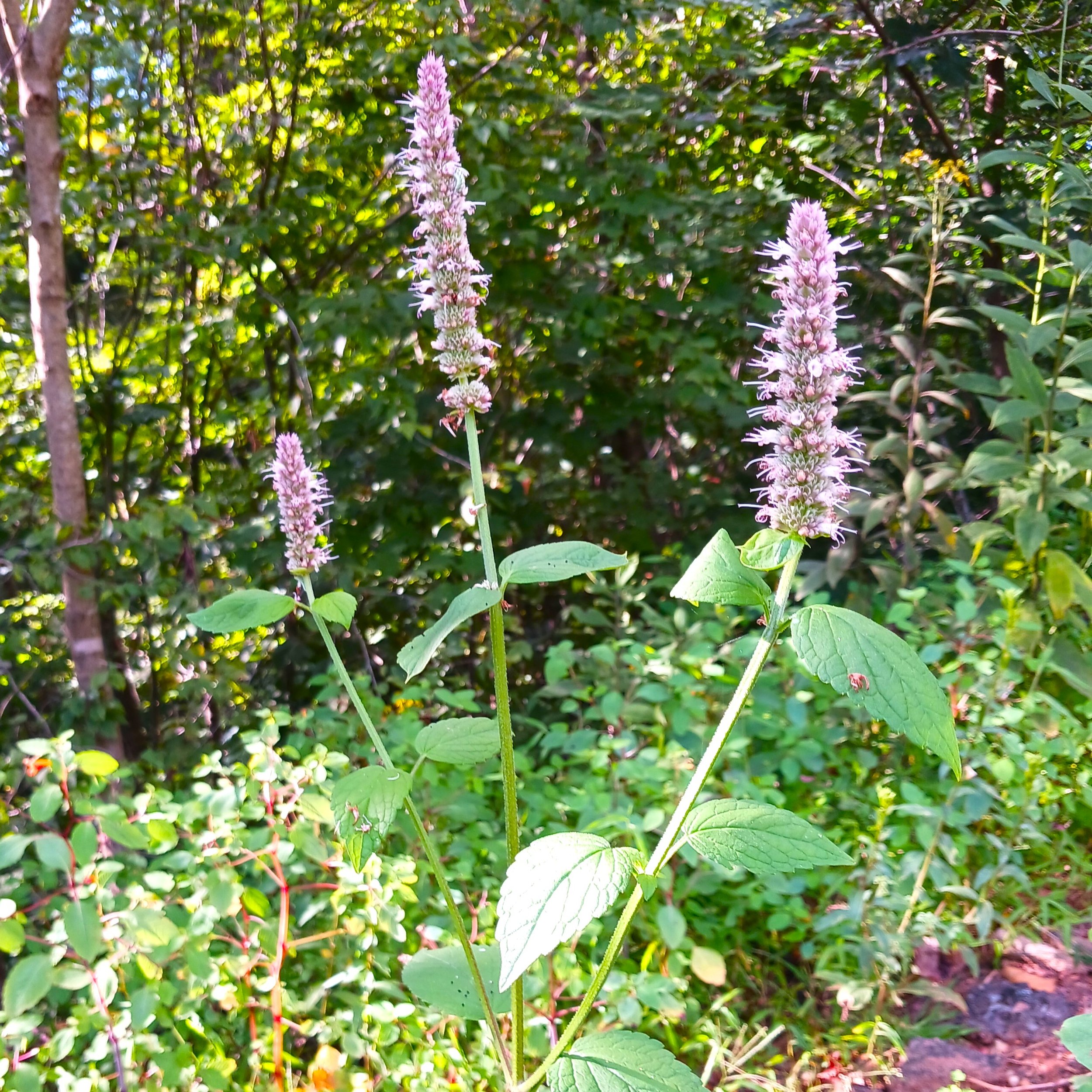 Image 5 of 8
Image 5 of 8

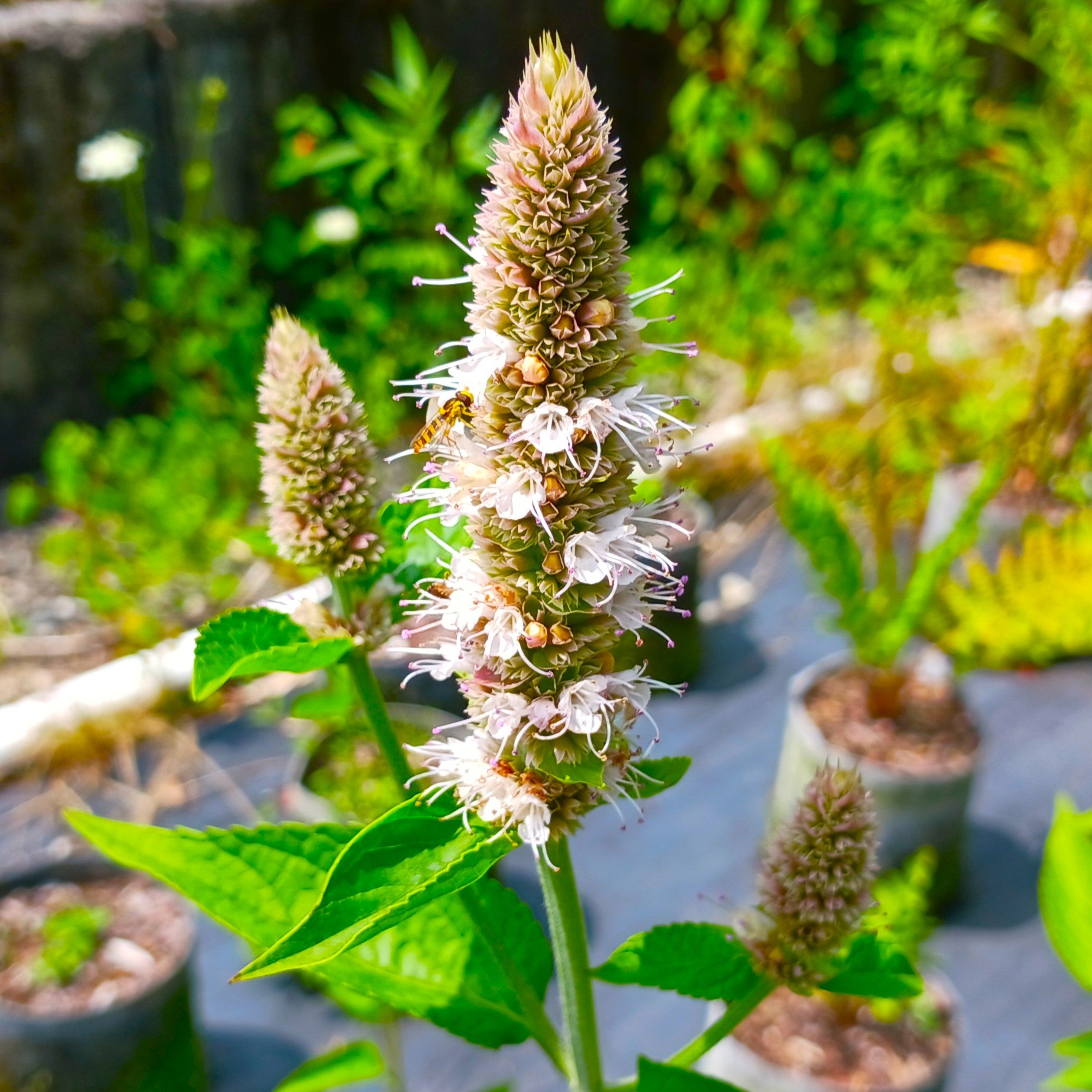 Image 6 of 8
Image 6 of 8

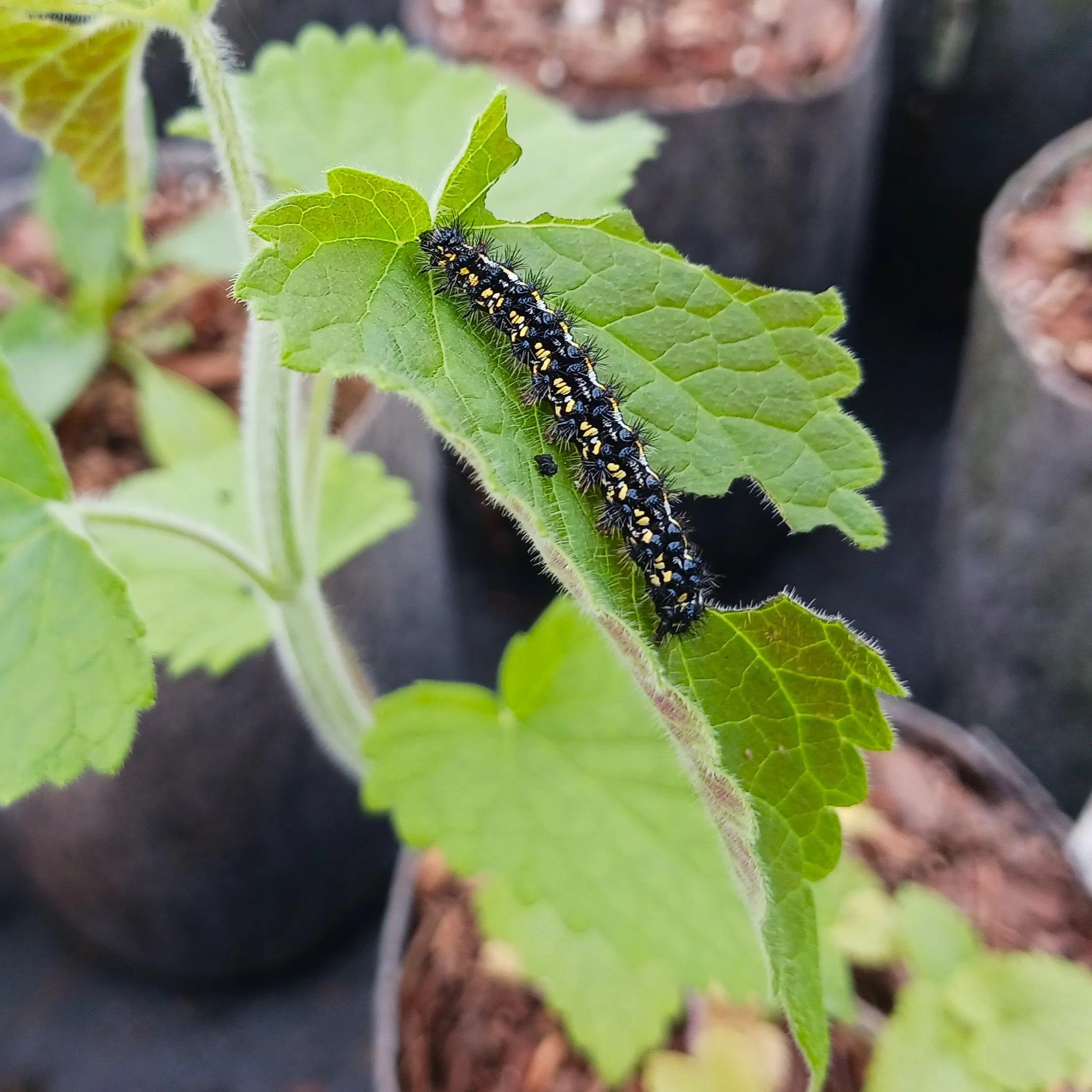 Image 7 of 8
Image 7 of 8

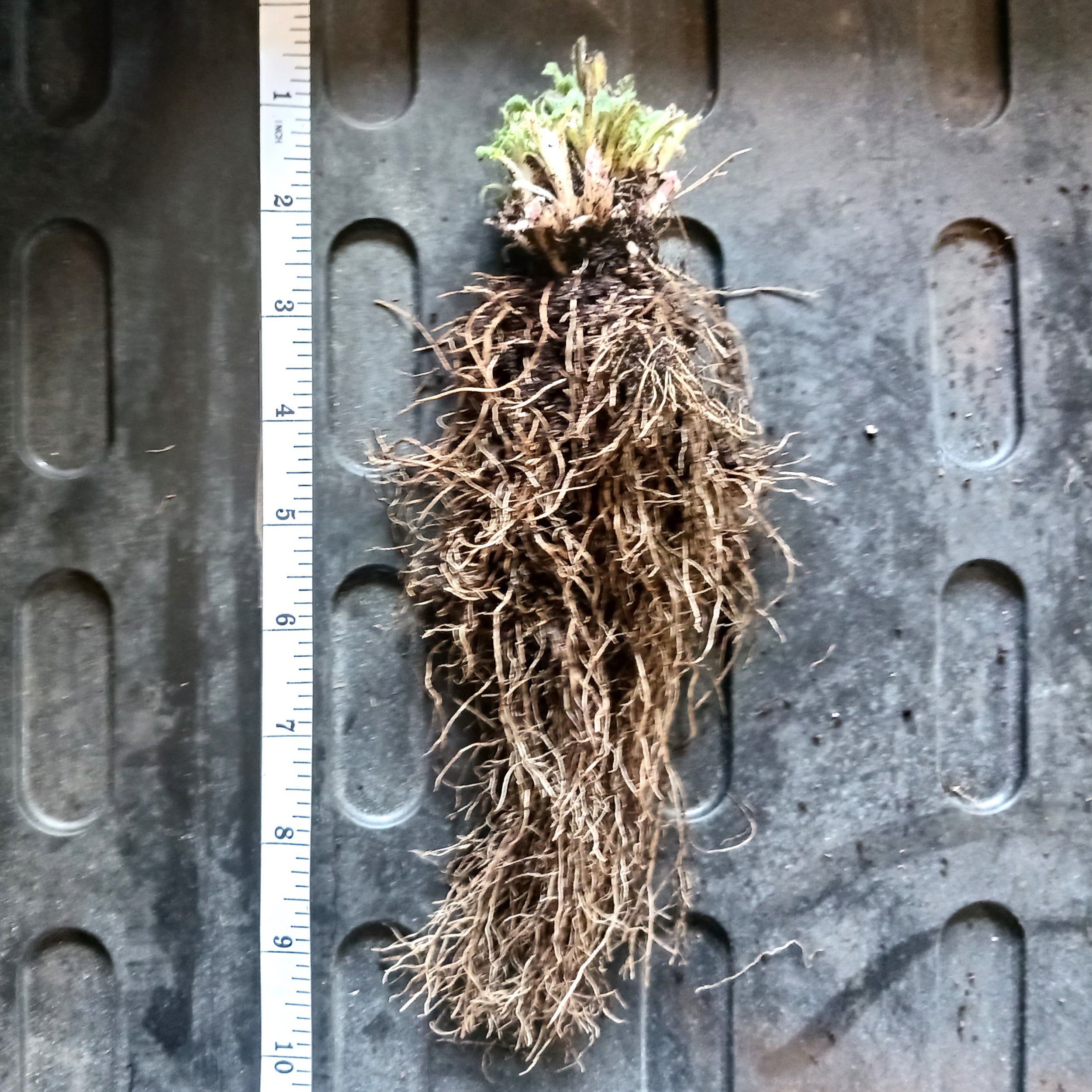 Image 8 of 8
Image 8 of 8









Agastache scrophulariifolia (Purple Giant Hyssop)
True bug lovers will appreciate the attraction of Agastache scrophulariifolia, the largest of the native hyssops in our region. It is a robust plant adapted to poor soils on woodland edges, growing tall and producing profuse clusters of flowers over a long summer bloom period. Agastache scrophulariifolia also attracts a range of pollinators, supporting rare native bees as well as beneficial flower flies. Its leaves are bitter to mammalian herbivores, but attract some unusual caterpillars, including species of dagger and sphinx moths. The clusters of pale lavender flowers may have a faint fragrance, but given enough sun it will have a showy floral display for humans and wildlife.
True bug lovers will appreciate the attraction of Agastache scrophulariifolia, the largest of the native hyssops in our region. It is a robust plant adapted to poor soils on woodland edges, growing tall and producing profuse clusters of flowers over a long summer bloom period. Agastache scrophulariifolia also attracts a range of pollinators, supporting rare native bees as well as beneficial flower flies. Its leaves are bitter to mammalian herbivores, but attract some unusual caterpillars, including species of dagger and sphinx moths. The clusters of pale lavender flowers may have a faint fragrance, but given enough sun it will have a showy floral display for humans and wildlife.
True bug lovers will appreciate the attraction of Agastache scrophulariifolia, the largest of the native hyssops in our region. It is a robust plant adapted to poor soils on woodland edges, growing tall and producing profuse clusters of flowers over a long summer bloom period. Agastache scrophulariifolia also attracts a range of pollinators, supporting rare native bees as well as beneficial flower flies. Its leaves are bitter to mammalian herbivores, but attract some unusual caterpillars, including species of dagger and sphinx moths. The clusters of pale lavender flowers may have a faint fragrance, but given enough sun it will have a showy floral display for humans and wildlife.
Agastache scrophulariifolia is a wildflower in the Mint family, found in well-drained forest edges throughout the Appalachian Mountains. It is an early succession wildflower, germinating in poor, exposed soils with sun and some moisture, but wild populations are likely being outcompeted by invasive weeds. The leaves are bitter enough to deter moderate deer browse, but this perennial will grow profusely once established, reaching up to 6’ in height with dense clusters of blooms, especially in full sun and adequate moisture.
The showcase of Agastache scrophulariifolia is really its benefit to wildlife. Every year we find a variety of caterpillar species browsing on its leaves, especially generalists like sphinx moths and tiger moths. The lush growth creates plenty of food for caterpillars to eat without harming the host plant, which means nutritious food for birds! In addition, a variety of bees and butterflies are attracted to the blossoms, as well as flower flies, some of which are beneficial predators of garden pests. This wildflower is a must for any mountain garden.
Pollinators: bumblebees, leafcutter bees, long-horned bees, small resin bees, sweat bees, butterflies, syrphid flies, bee flies, soldier beetles
Host Plant for Butterflies/Moths: Radcliff's Dagger Moth (Acronicta radcliffei), Summer Azure Butterfly (Celastrina neglecta), Orange Mint Moth (Pyrausta orphisalis), Tiger Moths, and Sphinx Moths
Wildlife Value: Hummingbirds, songbirds, shelter, winter cover, square-hollow stems
Deer Resistance: Very Good
Native Region: Appalachian Mountains
Seed Origin: USA
Light Recommendation: Full Sun, Part Sun
Soil Moisture Recommendation: Moist, Medium-Dry
USDA Zones: 3-8
States found in our region: DE, GA, KY, MD, NC, PA, SC, TN, VA, WV
Other states found: CT, IL, IN, IA, KS, MA, MI, MN, MO, NE, NH, NJ, NY, OH, SD, VT, WI


